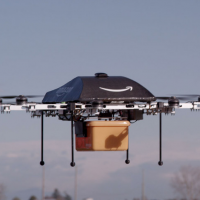Will There Be a Silicon Valley of Drones? FAA OKs Drone Testing Sites

The option to choose delivery by drone sounds intriguing when touted by Amazon CEO Jeff Bezos, but a lot has to happen before privately-operated drones start dropping off packages at your front door. Integrating unmanned aircraft systems into the vast US airspace and creating standards for flying them safely is an enormously complex process.
However, the launch of commercial drones got one step closer to taking flight when the Federal Aviation Administration (FAA) recently announced winners of what’s been called “the competition to become the Silicon Valley of drones.”
With twenty-five state and local governments and universities in twenty-four states applying, the FAA selected six test site operators across the country to begin research and testing on unmanned aircraft systems (UAS):
- North Dakota Department of Commerce: The test range includes the temperate (continental) climate zone, along with human factors research.
- New York’s Griffiss International Airport: The congested, northeast airspace will test the capabilities of drones to sense and avoid people and other aircraft.
- State of Nevada: Research will include how UASs impact air traffic control procedures and how these aircraft can be integrated with NextGen technologies.
- Virginia Polytechnic Institute and State University (Virginia Tech): With test site range locations in both Virginia and New Jersey, this site will research what’s involved if a drone fails, identifying and evaluating operational and technical risks areas.
- University of Alaska: This selection provides a diverse set of test site ranges in seven climatic zones, including Hawaii and Oregon, in addition to Alaska.
- Texas A&M University–Corpus Christi: Plans are to develop system safety requirements.
In a conference call with reporters, ABC News quoted FAA administrator Michael Huerta as saying:
We recognize the expanded use of unmanned aircraft presents great opportunities, but it’s also true that integrating these aircraft present significant challenges. Safety continues to be our first priority as we move ahead. There are operational issues that we need to address such as ensuring that unmanned aircraft can detect and avoid other aircraft, and that they operate safely if they lose the link to their pilot.
According to the FAA, private companies can enter into agreements with the test sites as well. The test sites will be operational until at least February 2017.

